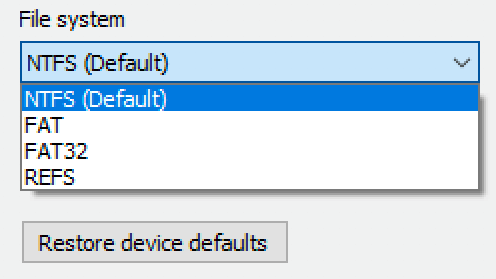
File data access can then take place all within the same cloud AZ or across cloud regions or even on premises with access to that cloud data. That is, their file data storage, metadata services, and any monitoring/management services all run in a public cloud provider.
Cloud resident services – Some DFS solutions can run in a public cloud environment. 
This feature prohibits a file from being corrupted by multi-host access even when accessing the file with different protocols.
 Cross-protocol locking – Some DFS systems allow for one protocol to lock a file while being modified by another protocol. High IOPS/great small-file performance – Some DFS systems support very high IOPS for improved small file performance. Scale-out storage solution – Most DFS systems support scale-out file systems in which file data and metadata service performance and capacity can be increased by adding more metadata or file data server resources–which includes gateways.Ĭharacteristics of a Modern Distributed File System. Some DFS systems are also available in appliance solutions, but that is more for purchasing/deployment convenience than a requirement of the DFS solution.
Cross-protocol locking – Some DFS systems allow for one protocol to lock a file while being modified by another protocol. High IOPS/great small-file performance – Some DFS systems support very high IOPS for improved small file performance. Scale-out storage solution – Most DFS systems support scale-out file systems in which file data and metadata service performance and capacity can be increased by adding more metadata or file data server resources–which includes gateways.Ĭharacteristics of a Modern Distributed File System. Some DFS systems are also available in appliance solutions, but that is more for purchasing/deployment convenience than a requirement of the DFS solution. #Downside of hfs file system software#
Software-defined solutions – Given all the above, most DFS systems are software defined solutions. In some cases where access and data reside together, gateways are not needed. Gateways like this can typically be scaled up or down to sustain performance requirements. Local gateways often cache metadata and data referenced by hosts. Local gateways – DFS systems may require some server and storage resources at each location that has access to its file data. Multi-networking access – While all DFSs provide Ethernet access to file system data, some also provide InfiniBand and other high performance networking access. This can also mean that the same file can be accessed with all protocols the DFS solution supports. Occasionally one can also see NVMe-oF for files and (NVIDIA) GPU Direct Storage access. Multi-protocol access – Hosts can access DFS data using standard NFS, SMB, or a POSIX client supplied by the solution provider. While most DFS systems have very specific requirements for metadata servers, their data or file storage can often reside on just about any storage available, including the public cloud. Diverse storage media/systems – Most DFS systems can make use of spinning disk, SAS SSDs, NVMe SSDs, and S3 object storage, as well as private, on-premises object storage to hold file data. Data-in-flight encryption – Most DFS systems support encrypting data and metadata while it is in transit. File locking – DFSs usually support file locking across or within locations, which ensures that no two hosts can modify the same file at the same time. 

Great large-file streaming throughput – DFS systems emerged to supply high-streaming performance for HPC workloads, and most continue to do so.Coherent access – DFS file data is managed so that it appears to the host(s) as if it’s all within a single file system, even though its data could be distributed across many storage devices/servers and locations.Data location is managed by the DFS and not by the host accessing it. Location independence – Hosts may have no idea where file data physically resides.Transparent local access – From a host perspective, the data is accessed as if it’s local to the host that is accessing it.Indeed, the data behind a DFS can reside in a different location from all of the hosts that access it. < Back to Learning Center Distributed File Systems (DFS) WekaIO Inc.Ī distributed file system (DFS) differs from typical file systems (i.e., NTFS and HFS) in that it allows direct host access to the same file data from multiple locations.








 0 kommentar(er)
0 kommentar(er)
